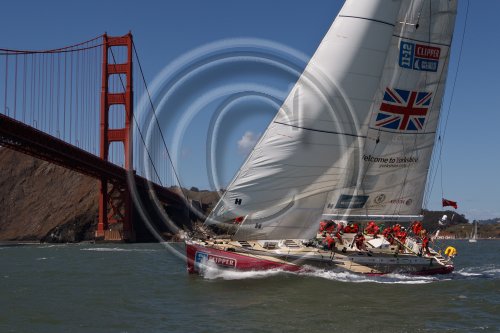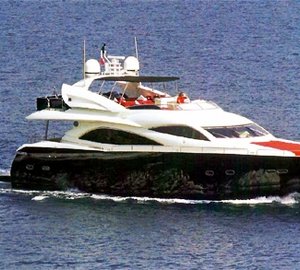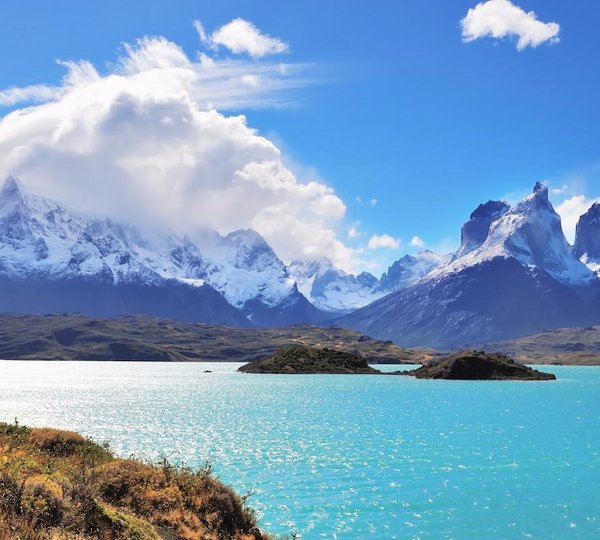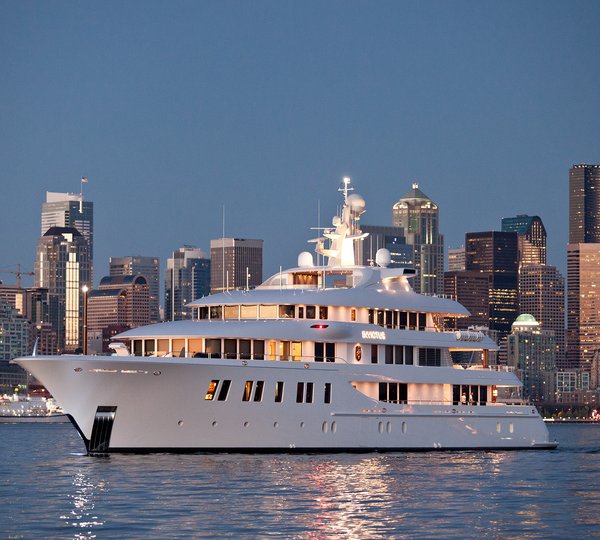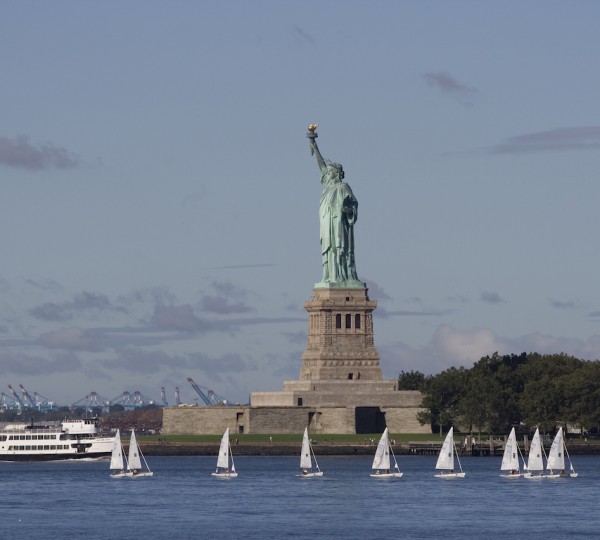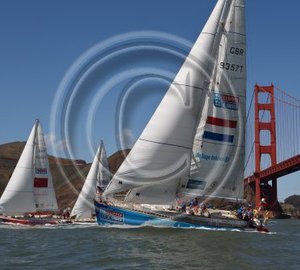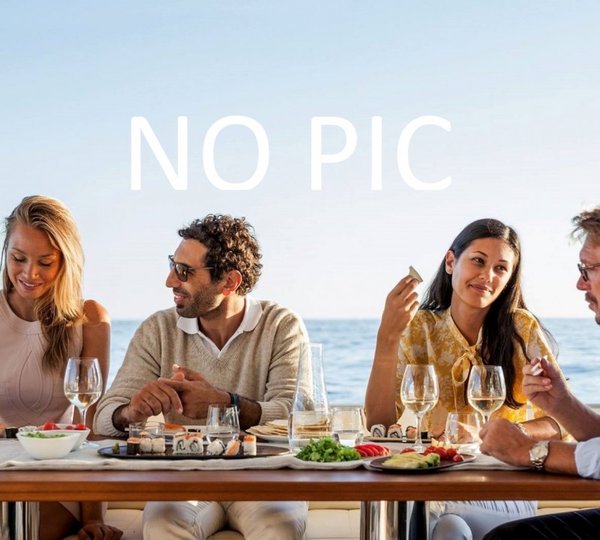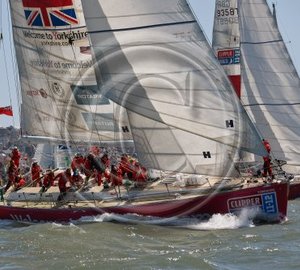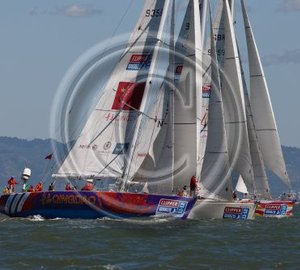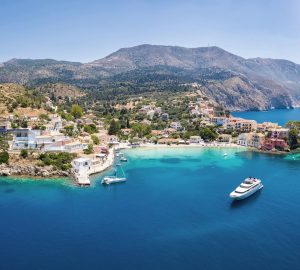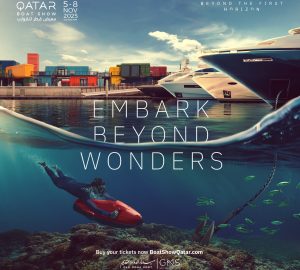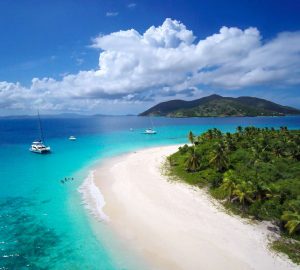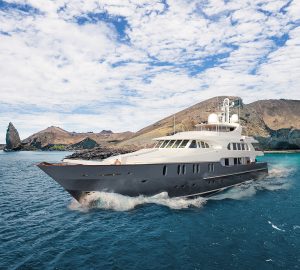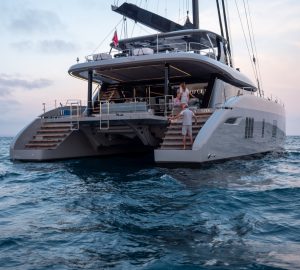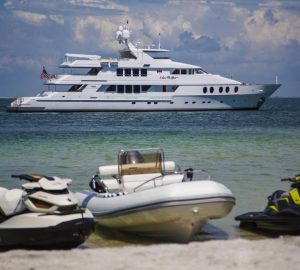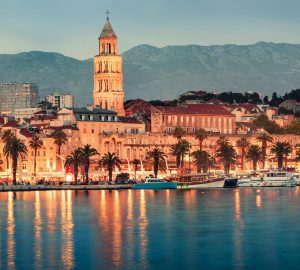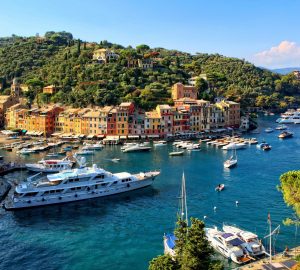Following two weeks ashore in Oakland, some of the crew competing in the Clipper 11-12 Round the World Yacht Race, after being settled into first night at sea, have been laid low by sea sickness.
It can affect new joiners and hardened round the worlders alike but soon passes – although at the time it might feel like it will never end – and the crews will be back up to full strength for the race from Oakland, California, to Panama.
A close-fought and lively start under the Golden Gate Bridge saw three of the yachts cross the start line ahead of the gun and, judged to be OCS (On Course Side) were told to round the end of the line and cross the start line again to exonerate themselves.
Since their departure from San Francisco Bay two distinct sets of tactics have opened up with New York hugging the Californian coast line while the other nine teams head offshore. New York’s tactic of staying close to the coast of North Africa in Race 2, way back at the start of Clipper 11-12, earned them third place in that stage. Will the coastal strategy pay off a second time?
“After our best start to a race, hitting the pin end of the line at full speed with full main, stay sail and Yankee 2, we ran into the shore line and tacked for the Golden Gate Bridge and just managed to pass in front of Qingdao before we tacked over. They just got under the bridge before us by half a boat length but as we raced out into the bay we took the lead. But this was not for too long; as the wind lightened and began to come from the stern we dropped back behind De Lage Landen and Qingdao,” reports skipper, Gareth Glover.
Gareth also explains that after their strong start an error when they were getting the heavyweight kite ready to hoist saw the sail go overboard. Fortunately it was recovered and in the meantime the team poled out the Yankee 2 – but not before the rest of the fleet had sped by, taking a good five miles from them.
By contrast, on one of the three yachts deemed OCS, skipper Flavio Zamboni, who took command of Edinburgh Inspiring Capital in Oakland, reports, “The situation on board is really good. We’re currently sailing under poled out headsail and enjoying it! After a pretty lively start, the crew is settling in the watch system again. The other boats are all around so the on-watch crew is keeping focused to match their speed.”
With the exception of New York, the other nine yachts are very tightly packed as they race south, enjoying the north westerly winds that should be with them for the next three days, according to fleet meteorologist, Simon Rowell.
Visit Finland, furthest to the east, is currently leading Welcome to Yorkshire, De Lage Landen and Qingdao who are progressively further west, with just six miles between them at this very early stage of what is likely to be a highly tactical race to Panama.
Rupert Dean, leading the English entry which is currently in second place, says, “Welcome to Yorkshire had a great start, timing the run to the line perfectly. All 17 crew played important roles in this, with Chris Leivers (helm) and Jim Stamp (mainsheet) putting great input into the tactical decision making. With winds gusting up to 30 knots apparent, our ‘Pink Lady’ was well and truly powered up, flying full main, staysail and Yankee2.
“Racing, therefore, required slick teamwork as we tacked swiftly onto port, then starboard on approaching the northern leg of the Golden Gate Bridge. From there the challenge was to clear the tower at Mile Rocks without tacking again, which was pretty close, but fully achieved.
“Since exiting San Francisco Bay, the fleet has been power-reaching south east on starboard tack, making good speed. We elected to bear away south first to hoist the heavyweight spinnaker, a strategy later adopted by competitors to the east.”
De Lage Landen’s skipper, Stuart Jackson, echoes many of the skippers’ comments this morning, saying, “We would like to extend our thanks to all those involved in giving us a great reception and hosting us so well in Oakland.”
Stuart continues, “After a great break ashore we are under way again heading down the west coast of the US to Panama. With the crew fully rested we enjoyed perfect conditions for the race start, so swiftly made our way out under the Golden Gate Bridge. We were given a rousing send off from a large boat full of De Lage Landen members who came down to support us.
“Everyone has quickly adjusted back in to life at sea and the watch system. Thankfully the weather is looking like it may be kind to us for a few days as we are already enjoying a spinnaker run in around 20 knots of wind and enough swell to enjoy a little surfing.”
Qingdao’s crew are also enjoying the surfing and few more canvas than the other yachts at the race start, before being among the first teams to hoist their spinnaker shortly after the start, and skipper Ian Conchie thinks it paid off.
“We decided to take a gamble with our sail selection and go with the Yankee 1 and were the only boat to risk it,” he says, adding, “The start was great fun with all ten boats close as we approached the line. We tacked soon after the line and headed for the bridge in close company with De Lage Landen and Welcome to Yorkshire.
“The beat up to the bridge and out of the bay was interesting as our sail selection meant we were slightly over powered. But once we started to bear away it came into its own and we started to make some gains. As we reached down the coast the wind continued to veer, allowing us to hoist the kite and we powered south.”
The other two teams who were OCS at the start, Singapore and Gold Coast Australia, recovered and are neck and neck in the middle order.
“If anyone thought that the start of this leg would be an easy cruise down the coast then they had another think coming!” comments Ben Bowley, skipper of Singapore. “Having started a few seconds early (if one is not occasionally OCS then one is not trying hard enough, so I hear) we had to round the only available end of the line to exonerate our little transgression. This still did not have much of a detrimental effect on our performance as by the time the rest fleet passed under the bridge we were back with the pack. The whole Bay Area looked picture postcard stunning in the crisp clean air and bright sunshine. I was sad to be leaving California and all her welcoming residents so soon (although, it does feel fantastic to be back on the water!).
“Once under the bridge the conditions became really rather lumpy and confused with a large amount of residual swell that was threatening to turn into big surf even a couple of miles offshore. With all the extra weight of over 50 days’ food and an extra five crew and associated kit, the boat took to her new classification of submarine very well. We punched straight through several waves that swept the boat from stem to stern with a ruthless, bubbling efficiency, leaving some of the new crew a little wide eyed.
“We have now lost a few members to sea-sickness but with conditions due to abate over the next few days, I’m sure we shall be up to full strength before too long. For now though, we are straight back into it with Vicky [spinnaker] up, no moon, big swell, no Windex and new crew to contend with. I am happy with our current position within the fleet and hope that if we can keep everything together for this first 24 hours under spinnaker then we shall see ourselves well placed by daybreak.”
Gold Coast Australia has a few crew down with sea sickness as well and opted not to take the spinnaker option straight away.
“At the first change of watch more of the team were feeling fit and we were able to hoist our heavyweight spinnaker and sail a more southerly course,” reports Richard Hewson, the skipper. “There is a bit of a swell running in from the north west making helming difficult but the boat feels a lot more stable with the kite up. The wind has already started to moderate, though there is the occasional gust of 30 knots which makes life a bit more exciting. Hopefully this wind will stay with us for the next few days so we can make some good ground to the south.
“The fleet remains relatively close and at the moment we are battling it out for first place amongst a number of other yachts. It is fantastic to be in eyesight and VHF range as we all charge down the coast towards Panama. This race has some interesting tactics ahead, and it will be interesting to see who plays the shore and who heads to sea as the information from local sailors shows advantages at different times to support each theory. At this stage I will keep the tactics of Gold Coast Australia under wraps, so keep checking the race viewer for regular updates!”
While Richard wonders which of the two options will be more favourable in the sprint south, New York is occupying the inside lane while Geraldton Western Australia has opted for the outside and is currently the back marker.
Neck and neck with the fleet approximately half way between San Francisco Bay and Los Angeles, Derry-Londonderry and Edinburgh Inspiring Capital are matching each other and, says Mark Light, skipper of the Northern Ireland entry, “It’s good to be racing again.”
He adds, “At the start there were some tremendous swells heading into the bay as the mass of water was squeezed up and over Four Fathom Bank and thrown into the bay. At times our boat was more like a submarine than a racing yacht! We made good speeds and once clear of the land found that the conditions settled and the wind moved aft.
“We are pretty deep downwind right now, flying our full mainsail and poled out Yankee 2 with 20 knots of wind coming from the north west. Unfortunately we have the usual few crew partially down with mal de mer and so the sensible choice through this first night at sea has to be a poled out headsail instead of spinnaker. It is a pretty dark night, without moon and, as normal, the temperatures are still rather chilly so layers are still the order of the day. We know this will not last and expect things to change fairly quickly as we head ever further south.”
From a northern California spring the teams will find the temperatures rapidly warming up and the winds becoming flukier the closer they get to Panama, a few degrees north of the Equator, during the course of the next few weeks.

